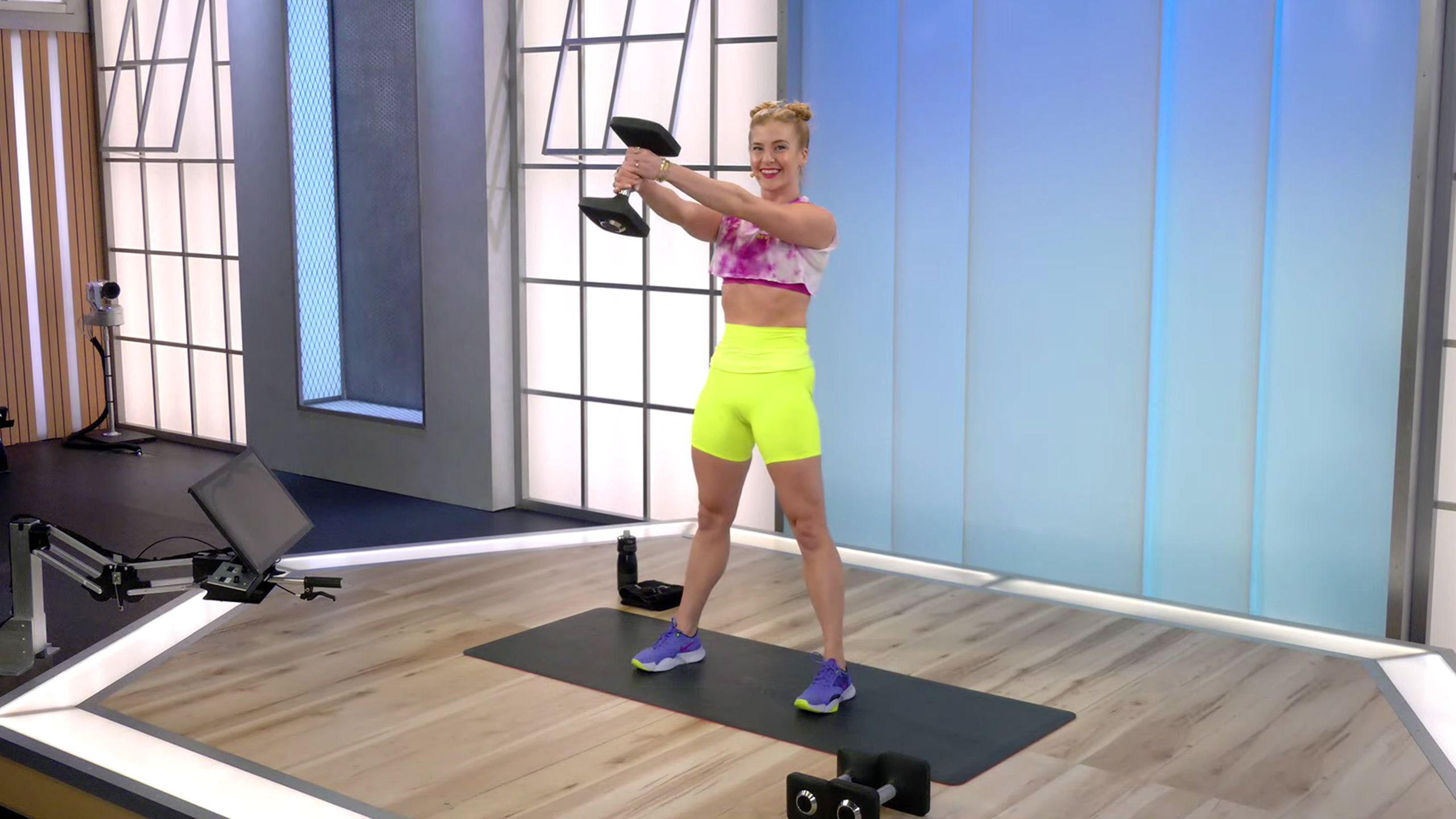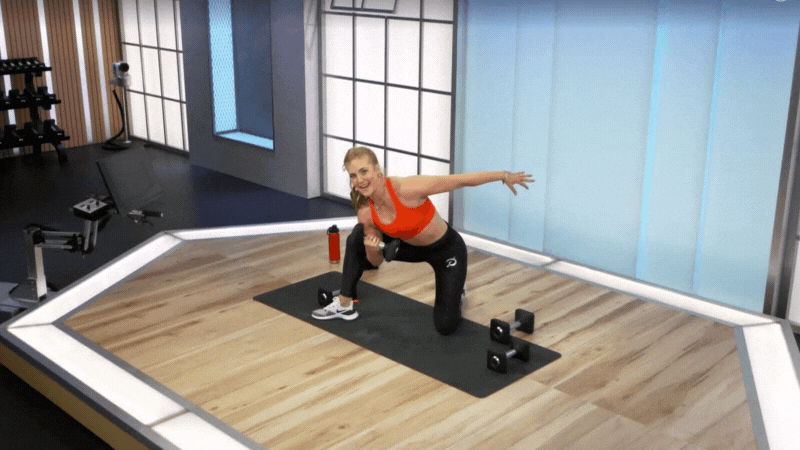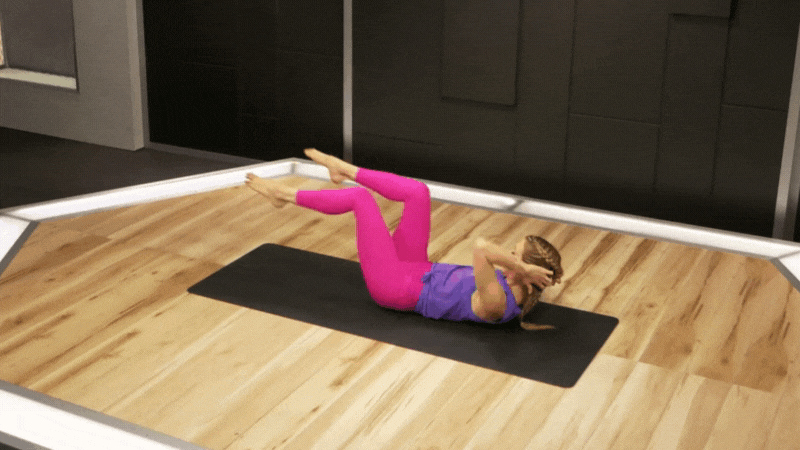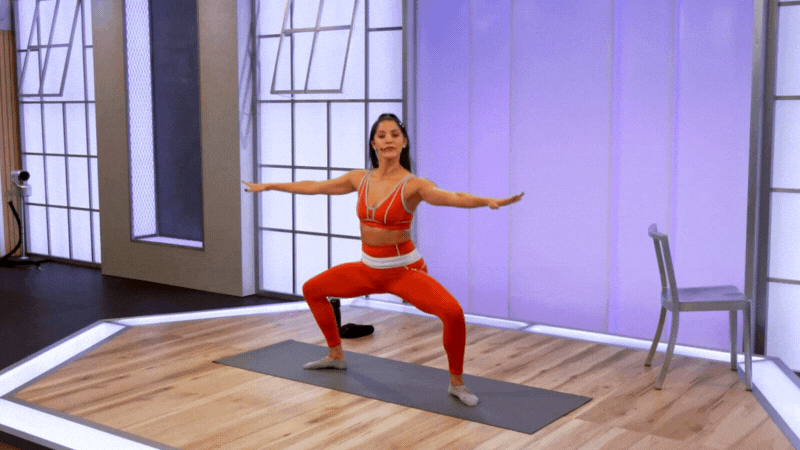
The Benefits of Strength, Pilates, Barre & Yoga (and Why You Need Them All)
Confused about the differences between each type of strength workout? We got the instructors to break it down for us.
By Amy Gurvitz •
You’ve probably heard about the benefits of incorporating strength training into your workout routine: increased muscle mass, boosted metabolism and improved cardio capacity, just to name a few. With Peloton’s strength offerings ranging from traditional weight training to barre, Pilates and yoga (and our first ever connected strength product, Peloton Guide) there are so many ways to begin. The good news is that you don't have to choose just one—and in fact you shouldn’t.
“Varying your training modalities helps prevent plateau and challenges your mind, muscles, joints and body awareness in order to continue progressing in your training journey,” explains Peloton instructor Rebecca Kennedy. “It helps prevent burnout or over-training in one area and, at the same time, provides exciting new challenges to help keep you motivated, learning and engaged.”
Sample different class types until “you find what makes your heart tick,” says Rebecca, whose own weekly workouts include strength training, Pilates and restorative yoga. “You'll be more likely to stick to something that brings a smile to your face and you look forward to. But don't run away from a challenge—that's how we learn how to adapt and grow.”
To help you get started, we asked some of our instructors to explain the differences between these four exercise types, and how your body benefits from each one.
Traditional Strength Training

What it is: “Strength classes take a progressive overload approach, using dumbbells throughout the class to put muscles under more tension and load in shortened positions in order to achieve a greater strength pay off,” Rebecca says.
Along with dumbbells, Peloton strength instructors utilize bodyweight and resistance bands while guiding Members through tried-and-true exercises like squats, crunches, deadlifts and shoulder presses. “Strength classes at Peloton are specifically designed to increase your overall strength and muscle mass through a functional approach,” adds Rebecca.
What traditional strength training can do for you: “Our holistic approach to training helps increase overall strength and joint stability, improves heart health and bone density, and improves muscular endurance and power,” Rebecca says. “It also builds body and spatial awareness, boosts confidence and mood and enhances functional performance.”
Rebecca gains strength not only from her classes, but also from the progress reports and success stories she receives from Members. “I love hearing how they just did their first push-up off their knees or ordered heavier weights because they outgrew their lighter ones,” she says with pride. “Or how they started adding strength regularly to their weekly routines because it empowered them on and off the mat.”
How traditional strength training differs from other classes: “In strength classes, reps are typically no more than 10 to 15 per exercise and repeat more than once throughout a circuit/AMRAP/EMOM-style of training,” Rebecca explains. “In other styles of training, you witness more of a flow, moving from one exercise to the other, loading in lengthening positions, with higher rep counts.”
She concludes, “Strength training brings us right to the starting line of our own guts and resilience. You welcome fatigue and explore new ways to endure it, clear it and get stronger.”
Pilates

What it is: “Pilates is a complete mind/body exercise and an incredible way to strengthen your core and entire body,” says Peloton Pilates instructor Kristin McGee. “Every movement originates from the core, but you are still getting a full-body workout so your legs, arms, back and entire body will be stronger and your spine will feel longer.”
Adds fellow instructor Aditi Shah, “Pilates uses breath work and a focus on core strength and alignment to build strength, flexibility and body awareness.”
What Pilates can do for you: “Pilates works the deep core and entire torso region,” Kristin explains. “When you learn to move from your center, you are more efficient and powerful. Also, by strengthening your abdominals, you can prevent injuries and support your back when you run, ride, lift or stretch.”
“Pilates is supportive of and will improve any other form of movement,” agrees Aditi. “Anytime I have been injured, I have returned to Pilates to help me regain alignment, stability and mobility. When we focus on moving from a strong, steady center, we can create and reinforce healthy movement patterns—and of course, get stronger.”
How Pilates differs from traditional core strength classes: “Pilates is not just core strengthening, but also core activation awareness,” says U.K.-based Peloton instructor Sam Yo. “It trains the mind-muscle connection to make sure we align, stabilize, activate, then move. Pilates uses the core as a base of movement through isolation or controlled range of movement across the whole body.”
Barre

What it is: “Barre is a modality that was created from dance and ballet,” says Peloton barre instructor Ally Love. “It’s a combination of big movements followed by shortened movements, isometric holds and pulses.”
Fellow instructor Hannah Corbin, who also teaches Peloton barre, offers, “Barre will help you learn to inhabit your body in new and exciting ways by incorporating small-range movements and isometric holds done to the beat of the music.”
What barre can do for you: “The dynamism of barre challenges your body in new ways by isolating and training small muscles that are often overlooked,” explains Hannah. “To wholly train your muscles, you have to teach your body to be ready to not just go forward, but also sideways and diagonal, to twist and turn on a dime.”
Barre may not be high-impact, but it does have moments of high intensity. “Let’s get it straight,” says Hannah, “Barre is low impact, but you will sweat. When you jump back on the Bike or take that run, you'll find new levels of endurance and strength that you never would achieve by just riding or running alone.”
How barre differs from Pilates: “Barre focuses on small, isometric movements that are based in ballet,” says Hannah, who also teaches Peloton Pilates. “Pilates focuses less on the extremities and more on finding your center and drawing out the length in your body.”
Yoga

What it is: “Depending on the class you decide to do, most yoga workouts have a mixture of poses that help mobility, flexibility and overall strength,” Aditi says.
“The attention to breath is what makes yoga different from stretching,” adds Kristin, who, like Aditi, teaches both yoga and Pilates classes at Peloton. “We focus on taking slow, deep, mindful breaths as we move in and out of or hold each yoga posture.”
What yoga can do for you: “Yoga helps you build overall strength and mobility,” Kristin says. “Try it in place of a strength-training session or even on recovery days.”
The benefits of yoga are more than just physical. “A good yoga class will help stretch muscles, tone the organs, strengthen the body, focus the mind and so much more,” says Aditi. “You might find that a yoga practice helps to build discipline, tolerance and balance that you can take off of your mat.”
How yoga differs from Pilates: “The single biggest difference, in my opinion, is that Pilates is more of an exercise routine originally developed to help injured athletes and then became a popular and amazing workout for everyone,” Kirstin says. “Yoga was created thousands of years ago as a path to spiritual enlightenment through a series of postures, breath work and other practices, like meditation, and really caught on for those looking for more than just exercise.”
“Yoga and Pilates have very different goals,” agrees Aditi. “Pilates is 100 percent about exercise and helps us to move with integrity. The movements are structured, anatomy-focused and controlled. In yoga, movement is only one part of the entire system of yoga and isn't necessarily about exercise. Yoga is more about discovering and working with how we relate to ourselves and the world.”
Whichever kind of strength workout you need today, you can find it on the Peloton App—or for exclusive strength programs, check out our first-ever connected strength product, Peloton Guide.

This content is for informational and educational purposes only and does not constitute individualized advice. It is not intended to replace professional medical evaluation, diagnosis, or treatment. Seek the advice of your physician for questions you may have regarding your health or a medical condition. If you are having a medical emergency, call your physician or 911 immediately.


